If you’ve got a passion for t-shirt designs or a dream of starting your own t-shirt business, you’re in the right place.
And isn’t it exciting to know that the global t-shirt industry is booming?
The global custom t-shirt printing market was valued at $4.87 billion in 2021 and is anticipated to reach $10.37 billion by 2030.
So, it’s clear that there is a lot of earnings in this exhilarating adventure of starting a successful t-shirt company.
Now that your idea is validated, have you thought about planning it before diving into execution? Whether you want external investment or not, our t-shirt business plan will help you in every step of your journey.
This step-by-step guide assists you through the process of creating a t-shirt brand that leaves a mark on potential investors or partners.
Let’s dive in and discover the essential elements to kickstart your t-shirt business plan writing.
Key Takeaways
- Clearly identify your niche and establish your unique selling proposition(USP) that sets you apart from other t-shirt businesses.
- Draft a persuasive executive summary that outlines your goals, marketing plan, and financial forecast to attract potential investors.
- Make a realistic and strategic budget plan to assess startup costs and secure adequate financial funding.
- Do thorough market research and industry analysis to get a better idea about fashion trends, consumer needs, and preferences.
- Effectively promote your brand by developing a comprehensive sales and marketing approach.
- Highlight the importance of high-quality fabrics to build trust and loyalty among customers.
- Create a strong online presence to reach a wider audience and adhere to legal compliance to protect your brand.
How to write a business plan for a T-shirt Business?
Writing a business plan for a T-shirt business helps you define your brand, target customers, and manage finances. Here’s how to create one effectively.
1. Write an Executive Summary
The executive summary is a brief overview of your entire t-shirt printing business plan. It should feature an interesting description of your t-shirt business idea.
Try to summarize a few important topics of your business, from mission-vision statements to financial projections that will be explored in greater detail within the plan.
An executive summary should be clear, concise, and engaging as it attracts readers to delve further into your plan. Here’s how you can outline this section:
- Business description
- Market Opportunity
- Products and services offered
- Management team
- Financial highlights
You can also add a 3-year profit forecast as it entices investors to delve further into your plan. Here is an example illustrating the profit margin for the t-shirt business:
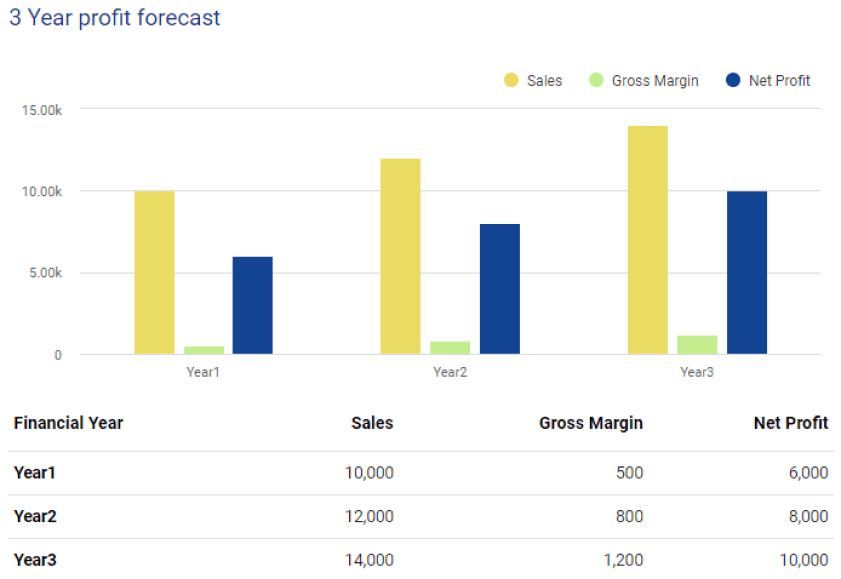
Lastly, conclude this section with a persuasive call to action for inviting potential investors or readers if they are curious about your business.
Say goodbye to boring templates
Build your business plan faster and easier with AI
Plans starting from $14/month

2. Provide a Company Overview
Now, it’s time to focus on key aspects of your t-shirt printing business that help you turn your idea into something real and concrete.
Provide all the basic details of your t-shirt company including
- Name & concept of your business (a physical store or online t-shirt business)
- Company structure & legal entity (sole proprietorship, Limited Liability Company (LLC), partnership firm, or some other)
- Location
Clearly define your business owners’ or partners’ names with the percentage of shares. And emphasize your passion for fashion and commitment to quality with mission and vision statements.
Here is an example of defining the mission statement of a t-shirt company using Upmetrics:

Discuss a little bit more about the business history and how your company operates. Here, don’t forget to answer questions like:
- When did you start your t-shirt business?
- What is the purpose and long-term objective of your t-shirt brand?
- What milestones have you accomplished? It could be the number of customers served, positive reviews, new t-shirt store openings, etc.
Also, represent any regulations or licensing requirements that affect your t-shirt company.
3. Conduct an Industry and Market Analysis
Starting a t-shirt business requires a strategic roadmap and a comprehensive t-shirt industry analysis. So, take some time to go further and locate more accurate data.
Consider answering the below questions to filter the most pertinent facts:
- What is the relevant market size of the t-shirt printing business?
- Is the market growing or dropping?
- Who is your target audience, and what are the habits of your ideal consumer?
- Who are the key players in the t-shirt printing industry?
- What are the market trends affecting your business?
- What is the potential growth forecast for the next 3-5 years?
This market research outlines a clear picture for planning every practical aspect of your business. Include below essential elements in your t-shirt business plan:
Market size and growth potential
It’s a major t-shirt market in the U.S. and it implies that there is an ongoing demand for new t-shirts. So, you need to explore specific data about various markets in which your company operates to ensure success and profitability.
It’s a well-diversified market as t-shirts are highly popular among an assortment of consumers. In 2023, the US t-shirt market revenue is projected to be $5.2 billion and is expected to grow annually by 3.56% (CAGR 2023-2027).
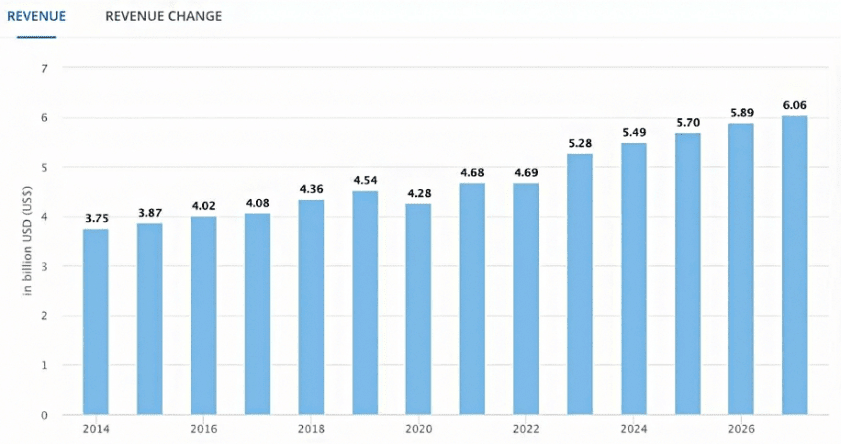
This report depicts the size of the t-shirt business market and serves as a practical example of what to incorporate in this section of your business plan.
Target market
In this section, you can give details of the customers you serve or expect to serve. Conduct market research, define your ideal customer, and describe the types of products or services they prefer.
College students, sports lovers, soccer mothers, techies, teens, and baby boomers are a few examples of customer segments.
While creating a buyer persona, consider demographics, style preferences, buying behavior, and their needs. Also, illustrate how your t-shirt designs cater to specific market segments.
Competitive analysis
Now, it’s time to identify the top competitors in the t-shirt industry. Let’s categorize them into the following two parts:
- Direct competitors can be other t-shirt businesses
- Indirect competitors can be other types of shirts and apparel items
Analyze their strengths and weaknesses, and explain what differentiates your T-shirt brand from them in terms of design, quality, and brand identity.
Emphasize what are your competitive advantages in the market. You can also perform a SWOT analysis to find your business position. Here is an example of a SWOT analysis using Upmetrics:
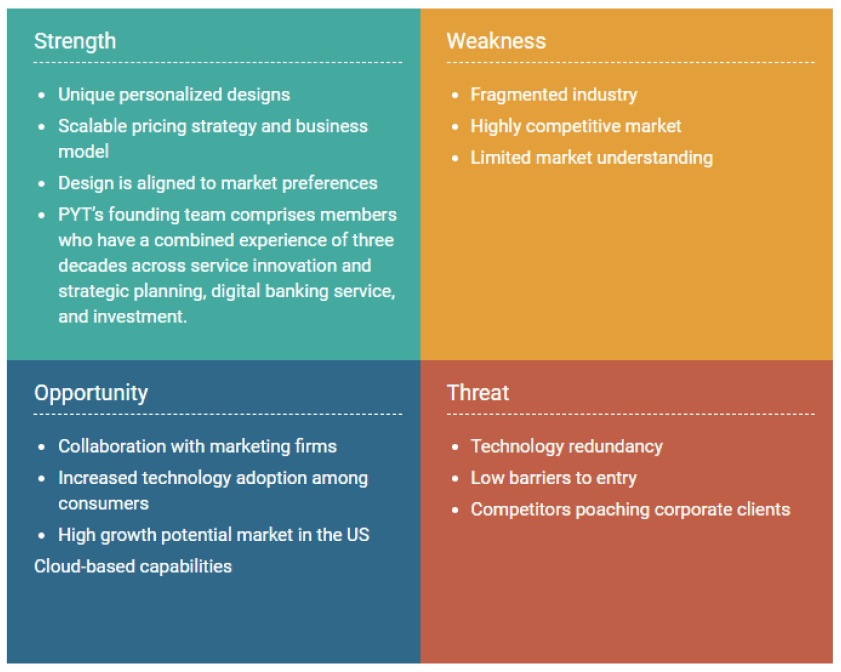
Market trends
The dynamics of the fashion industry and emerging market trends can potentially influence buying and selling patterns. So, make sure your t-shirt company will potentially cope with all the trends.
Refer to updates from fashion and business publications to get the latest insights into the current industry trends for t-shirt businesses.
4. Propose Your Product Offerings
Begin this section with a quick introduction to your T-shirt business’s product line. As per t-shirt designs, your t-shirt offerings can be any of the following:
- Men’s t-shirts
- Women’s t-shirts
- Children’s t-shirts
- Toddler’s t-shirts
- Printed t-shirts
- Customized t-shirts
- Pet T-shirts for dogs and cats
Afterward, list each product with a relevant title and pricing information. Be transparent about the pricing strategies as positioned for premium, affordable, or mid-range.
Keep language simple that resonates with your target customer while crafting compelling descriptions and specifications of your t-shirt offerings or unique designs.
Ensure to accentuate the key features and fabrics used in the product descriptions. For specifications, summarize size options, material specifics, and available color variations.
Also, highlight the essence of what sets your t-shirts apart in the competitive market, whether it’s special t-shirt designs, eco-friendly materials, or a clear brand story.
Emphasize quality control measures, such as inspections or testing, that assure the durability and comfort of your products. Give clarity to potential customers and help in making informed decisions.
Refer below example written using Upmetrics’ AI writing assistant:
1. Classic Cotton Collection
Price: $20 per T-shirt
- Each T-shirt is meticulously crafted from premium, 100% organic cotton, ensuring a luxurious feel against the skin.
- These shirts boast supreme comfort, exceptional durability, and a versatile style that seamlessly transitions from casual outings to special occasions.
Specifications
- Sizes Available: S, M, L, XL
- Color Options: Various classic colors, including white, black, navy, and gray
- Special Features: Tagless design for added comfort, reinforced seams for enhanced durability
2. Personalized Graphic Tees
Price: $25 per T-shirt
- Made from soft cotton blends, these T-shirts are a perfect canvas for self-expression, allowing customers to wear their stories.
Specifications
- Sizes Available: XS, S, M, L, XL
- Color Options: Diverse color palette for personalized designs
- Customization Features: Option to choose from curated designs or submit personal design ideas
- T-shirt printing method: High-quality digital printing for detailed and vibrant graphics
Lastly, detail any additional services like customization options, selling t-shirts online, or print-on-demand services if applicable. You can also offer details about return policies and warranties offered.
5. Outline a Sales and Marketing Plan
In this highly competitive t-shirt marketplace, being noticed is crucial, which is why you need a tangible sales and marketing plan to reach your target market.
Therefore, communicate the objectives of your sales and marketing strategies. It could be maximizing outreach, fostering engagement, and achieving sustained growth for your t-shirt company.
While writing the sales and marketing section, keep in mind to outline the below strategies to attract new customers and retain existing ones:
Unique Selling Proposition (USP)
Define your Unique Selling Proposition (USP) and these distinctive features place your t-shirts apart from competitors. It will create a powerful brand stand for your t-shirt company.
Pricing Strategy
Research and analyze the pricing strategies of top players in the industry and create a competitive yet profitable pricing strategy. Set value-based average price for a t-shirt. Besides, sell t-shirts by offering discounts.
Marketing strategies
Develop a marketing approach that encloses online and offline marketing tactics. Consider using social media channels, influencer alliances, email marketing, brochures, print marketing, and Google Ads campaigns.
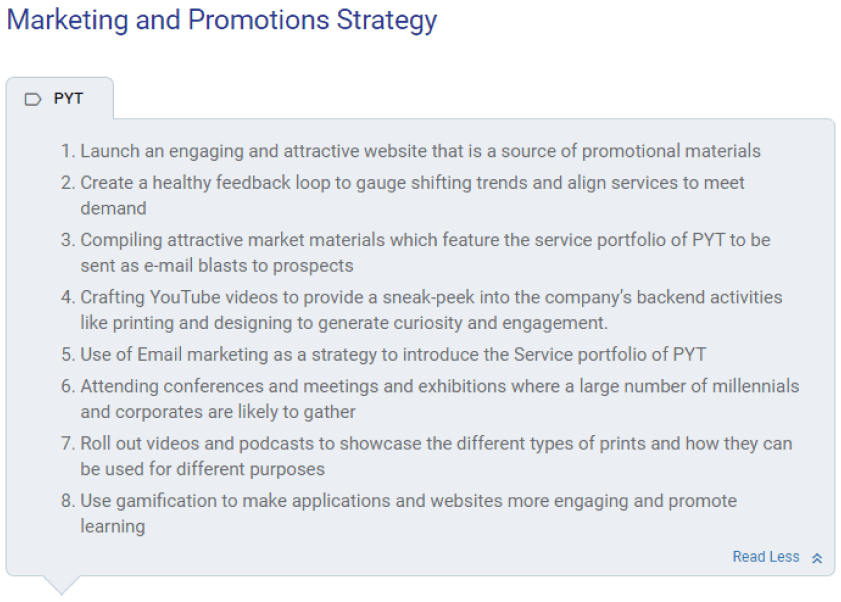
Sales strategies
Mention sales strategies that diversify t-shirt sales through a multi-channel approach(website, e-commerce platform, retail collaboration). Draw new customers through periodic promotional sales and referral incentives.
Customer retention
Mention how your t-shirt company will retain customers and build loyalty, such as with the help of loyalty programs for repeat purchases, personalized service, or special events
6. Introduce Your Team
A powerful management team is paramount to demonstrate your t-shirt business’s ability to flourish. Spotlight your key managers’ backgrounds, including skills and experiences that ascertain their capability to grow your t-shirt company.
Let’s have a look; an example of mentioning the management team using Upmetrics:

Consider incorporating the organizational chart (visually introducing the team structure and hierarchy) and compensation plan(including salaries, incentives, or employee benefits) in this section.
You can also present an advisory board by adding 2 -3 individuals who act like mentors to your business. They would help answer questions and guide you with strategic direction.
7. Outline Business Operations
Now, let’s emphasize the business operational plan, as detailed information on daily activities is essential for reaching business goals and fulfilling customer commitments.
Start with a quick introduction that outlines the pivotal role of daily operations. Then, give a meticulous summary of the day-to-day activities involved in driving the t-shirt business.
Wondering what to write in your t-shirt business’s operational plan? Well, here is a guideline:
Production process
Explain how these t-shirts are made, whether it is via in-house production or outsourcing to a third-party manufacturer. If you are designing t-shirts on your own, you can follow below 4 ways of printing t-shirts:
- Screen printing
- Heat transfer printing
- Direct-to-garment printing
- Embroidered printing
Supply chain management
Represent the supply chain procedures, from sourcing raw materials and manufacturing to distribution. Clarify how the supply chain supports product quality and fulfills customer demand.
Staffing
Highlight the staffing structure and pinpoint their roles & responsibilities for seamless operations. Briefly draft the tasks assigned to each employee and state their contributions to daily functions.
Not only that, prepare a hiring plan if your team is lacking and want to increase the team’s size. You can also employ temporary workers, or even subcontract services for peak periods of activity.
If any third party is involved, you don’t need to hire staff for inventory management. For instance, with print-on-demand service, the printing process, packing operation, and order shipping activity can be carried out by your print-on-demand provider.
Equipment and Technology
Describe the equipment required and the technology used in daily operations. Your t-shirt business involves production facilities, specialized machinery, inventory control systems, or order processing software.
Take reference from the below example written with the help of Upmetrics:
- Production Facilities: [Your T-Shirt Business Name] takes pride in its purpose-built production facilities, meticulously designed to optimize the T-shirt manufacturing process. Dedicated to cutting, sewing, printing, and printing on demand to ensure an efficient and streamlined workflow.
- Specialized Machinery: Our arsenal includes state-of-the-art machinery, from advanced cutting machines to high-speed sewing units. Digital printers for intricate designs and precision-driven heat press equipment are the backbone of our graphic application processes.
- Technology for Design and Customization: Creativity takes center stage with the technology employed for T-shirt design and customization. Graphic design software, digital mockup tools, and innovative virtual try-on features empower customers to unleash their creativity and personalize their T-shirts effortlessly.
- Order Processing Software: This software is designed to manage customer orders with precision, featuring order tracking, automated invoicing, and integration capabilities to streamline the entire order fulfillment process.
Customer satisfaction
Highlight the steps for ensuring prompt and accurate order fulfillment, from order placement to shipping and delivery. If running an online store and selling t-shirts, specify some customer service protocols to address queries and manage returns or exchanges.
8. Prepare Financial Projections
Generally speaking, you need a well-structured and in-depth financial plan for a successful t-shirt business. This section involves strategic calculations that showcase your expenses and profit margins.
You can include the income statement, cash flow statement, and balance sheet for 3-5 years. You can estimate the break-even point and funding needs from these financial projections.
So, define all the major components explained below:
Income statement
It is most commonly known as a Profit and Loss statement, or P&L, describing the gross profitability of your t-shirt business by subtracting costs of goods sold from revenue.
This part is an overview of the revenues, costs, and expenses accumulated within a designated time frame.
- Initial investment for equipment
- Costs of raw materials and supplies
- The outlay for marketing, bills, rent, subscriptions, taxes, maintenance, personnel
- Working capital
- Print-on-demand costs (if applicable)
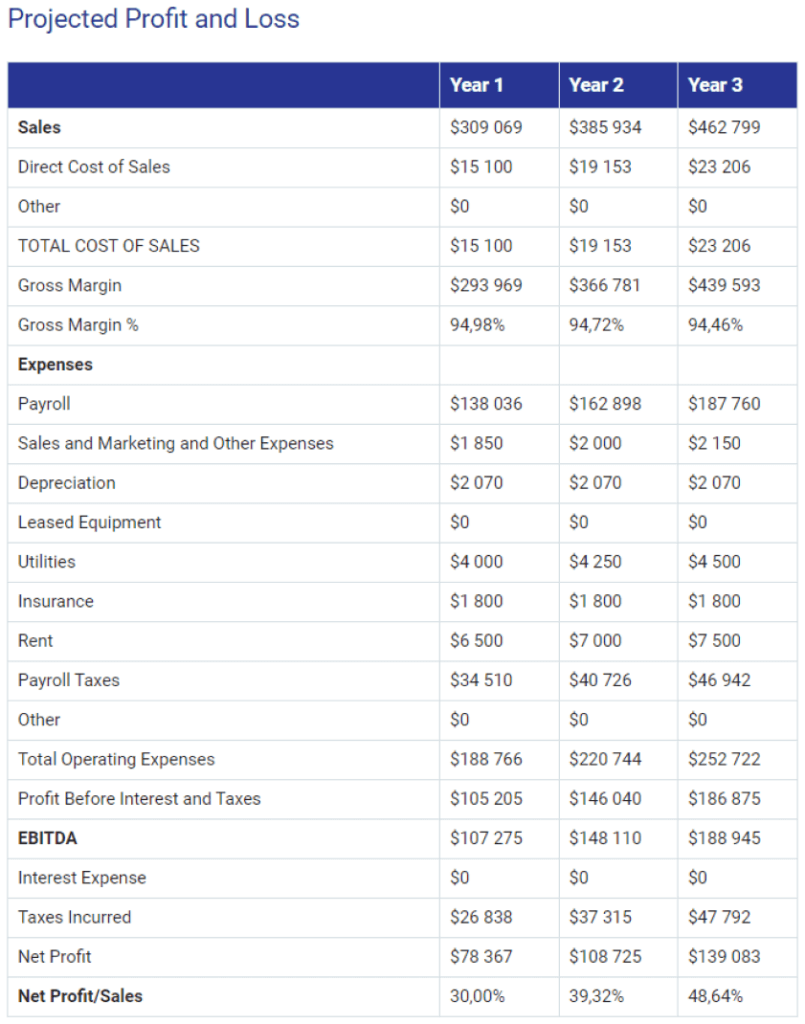
Cash flow statement
A cash flow statement helps you notice how much money you need to start or grow your business and avoid running out of cash. After launch, maintain this statement even for certain months before earning profits.
But sometimes, you get profits but still encounter financial issues that could lead to bankruptcy. Thus, you will require appropriate cash flow planning to avoid such cases.
Balance sheet
It is a financial aspect to display whether your t-shirt business has what it bears to pay and ultimately yield profit. Use this formula: total assets = total liabilities + total equity.
For instance,
- Assets would be your printed t-shirt business inventory, equipment, and investment cash.
- Liabilities would be taxes, subscriptions, eventual debts, and payments to suppliers.
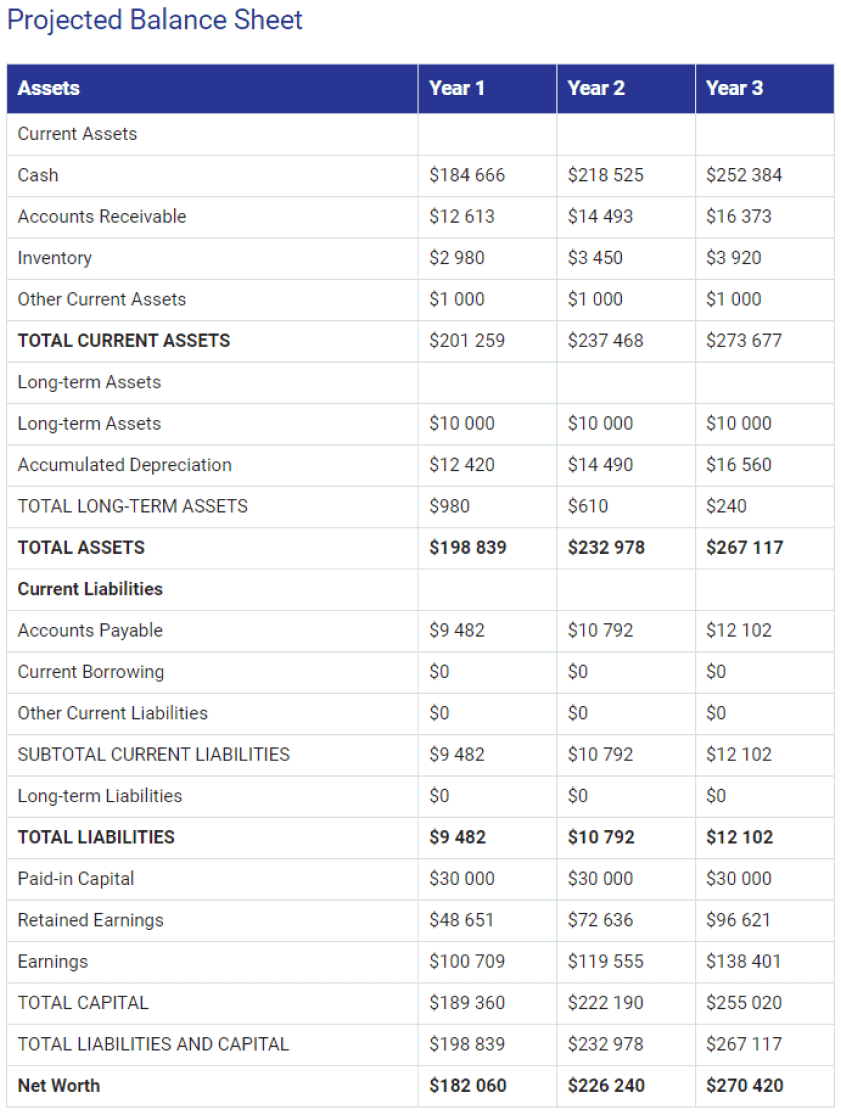
Break-even analysis
It is a projection of the exact point at which your company will sell enough T-shirts to cover all its expenditures. From this threshold, you can expect to start making purely returns.
All the above financial aspects can help you identify the funding requirements and estimate the funding resources for your t-shirt company, including bank loans, SBA-guaranteed loans, angel investors, and personal savings.
However, figuring out all the financial statements from scratch can be a challenging task. But not to worry; here is an easy way.
Use Upmetrics’ financial forecasting tool to prepare all the financial aspects for initiating your own t-shirt business.
Well, having realistic financial projections at your hand can help you to reveal the financial feasibility and sustainability of your business.
T-Shirt Printing Industry Highlights 2024
Let’s go through some t-shirt printing industry trends and statistics:
- The sustainable fashion market is expected to grow to $9.81 billion in 2025 and $15.17 billion in 2030 at a CAGR of 9.1%.
- By 2027, the volume in the t-shirt market is projected to reach 1.0bn pieces units, and there will be a volume growth of 3.1% in 2024.
- The global custom t-shirt printing market size reached $5.09 billion in 2022 and is estimated to hit around $14.81 billion by 2032. It will grow at a CAGR of 11.27% during the forecast period of 2023-2032.
- In the US, online t-shirt business revenue share will overtake offline sales and will account for 50.7% of the market revenue in 2024.
- The volume of children’s t-shirts market sold is predicted to reach 0.5 billion pieces by 2027; an expected volume growth of 3.0% in 2024.
- As per Statista, the US market is currently experiencing a surge in demand for vintage-inspired graphic t-shirts for women and sustainable and ethically-made t-shirts for men.
- The digitally printed t-shirts segment is estimated to register the fastest CAGR of 12.0% from 2023 to 2030.
Download a T-shirt business plan template
Are you ready to start writing a t-shirt business plan? And want to get help with your business plan? Well, here you can download our free t-shirt business plan pdf and start writing.
This advanced investor-friendly template has been crafted with t-shirt businesses in mind, whether a physical or online store. With step-by-step instructions and examples, this template helps you draft your t-shirt business plan.
Import data into your editor and start your business plan writing.
The Quickest Way to turn a Business Idea into a Business Plan
Fill-in-the-blanks and automatic financials make it easy.
Start preparing your business plan with AI
Now, it’s time to craft a blueprint to turn your entrepreneurial vision into reality. Launch your t-shirt business with confidence and precision by leveraging the power of Upmetrics AI assistant.
Whether you are an experienced entrepreneur or a novice to the business world, our innovative tools and tailored business plan templates simplify your planning process and guide you through each crucial step.
Don’t wait; seize the opportunity to bring your unique t-shirt designs to the online marketplaces. Start preparing your printed t-shirt business plan with Upmetrics and set the stages for a successful t-shirt business journey.
Let’s pave the way to the fashion landscape!




